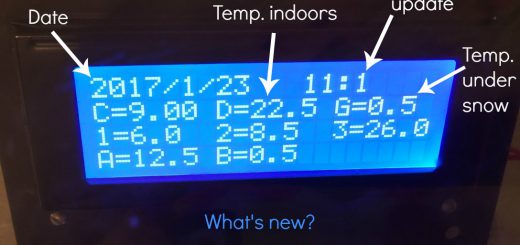What are the honeybees doing in winter?
Normally when we think of bees, we think spring time, flowers, summer buzzing noises…but what about in winter? Where do the bees go? Honeybees stick out the winter months inside their hive. They group together into what we call a winter cluster. The header picture for this blog is what a cluster looks like…a pack of bees with the queen being protected somewhere in the middle. This cluster travels around inside the hive eating the honey they’ve stored over the summer, and vibrating their muscles to generate a surprising amount of heat.
We’re doing an experiment!!
We have small apiary (bee yard) at Science North that contains our own two hives as well as some hives that belong to members of the Sudbury and District Beekeepers Association. In total, Science North is home to seven hives. One of the beekeepers is Otto Rost, who has been beekeeping for over 30 years.
Otto has some ideas about how to help the bees stay warm over the winter. To test his theory though, he needed some baseline data about how the temperature fluctuates inside of a hive. He approached Science North and asked if he could monitor some of the hives over the winter to field test the equipment he built in his workshop at home…and of course we said YES!
A) Science North Flow Hive; C) Science North Flow Hive; 1) Otto Rost Hive; 2) Otto Rost Hive; 3) Meghan Mitchell Hive. Note: Otto’s hives 1 &2 are being insulated together but have separate probes.
Otto has wired up five of the hives; two Science North hives (A&C), his own two hives (1&2) and my, Meghan Mitchell’s, personal hive (3) with temperature probes. Probe B (left picture below) is monitoring the outside temperature so that we can compare the temperature inside the hive to the temperature outside. These probes are transferring their data to a monitor (right picture below) which is set up in the Forest Lab on the Third Floor of the Science Center, right next to the observation bee hive.
You’ll notice as well, that the hives are insulated with slightly different materials and in slightly different ways. This is going to factor into the data that Otto is collecting. We also got an estimate of each of the experimental hives’ weights, which will give us an idea of how much honey the colony has stored and an estimate of how strong or weak that hive is, which might also affect the data we get from the probes.
We’re really not sure what is going to happen, or if the equipment is going to keep working throughout the winter. Otto has already had to troubleshoot some issues with the probes getting condensation on them. His ingenious solution was to dip the probes in wax! We’re all very excited about this and looking forward to watching as the winter progresses. Come check it out, and see how hot the bees are on the coldest days of winter!



